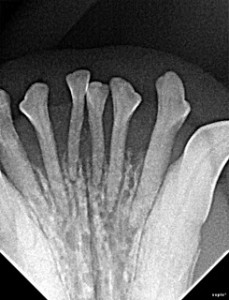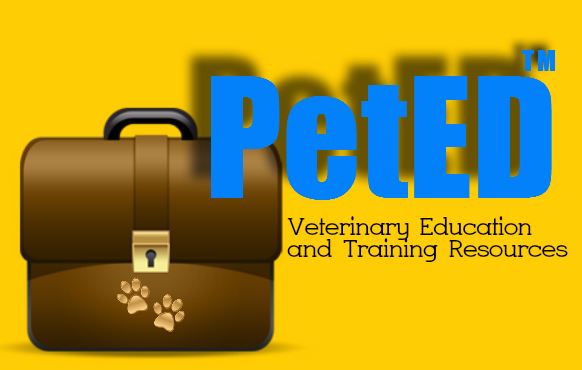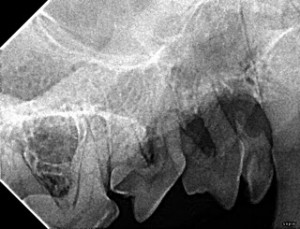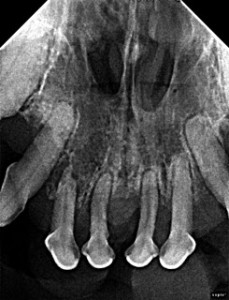By Vickie Byard, CVT, VTS (Dentistry), CVJ
I recently saw a screenshot that made its way to a vet tech focused Facebook page. Unfortunately, it brought back an old blog that I once posted on an old blog site I used to use. I thought I would revisit the topic, which is a hot button of mine, for educational purposes.
After this was posted, there have been a flurry of comments which ranged from not understanding what the problem is to questioning the legality of a groomer providing veterinary medicine. I so wish this was a topic that we could put to bed but I fear that will never happen.
Let me share an experience that I had and this should illustrate the reason that dentistry requires education, training, skill and most importantly, general anesthesia.
This is the saddest of cases!
A very nice man, brought his 8 year old, female spayed, King Charles Cavalier Spaniel to our practice. The history was that he had previously lost a Cavalier to cardiac issues, a problem that commonly effects this breed. That experience devastated him and he vowed to do everything in his power to avoid cardiac issues in his next dog if at all possible.
We had been providing care for this new dog for a number of years and the veterinarian heard an innocent systolic click when auscultating the heart. It was mentioned and this client sought a cardiac consult and an echocardiogram immediately and spent upwards of $400 on that evaluation. despite the fact that the cardiologist gave him a clean bill of health the first time, he provided this care annually for this dog. all was well. He wanted the best for his baby and he went to any lengths to provide that.
We recommended dentistry for this dog early on but this brought up a whole host of fears about anesthesia for this gentleman. He was afraid he was going to lose his friend. We tried to assure him with frequent professional care, we could provide the shortest and ultimately safest anesthetic experience for this sweet baby. We showed him how we have state-of-the-art monitors and that we have a dedicated anesthetist for the procedure.
He said he would consider this carefully.
What he did, in an attempt to safeguard his beloved was to seek a second opinion. He went to another practice. They witnessed his concern and offered to provide anesthesia-free dentistry and told him it would be ultimately the safest. He provided this level of care twice. The second time they told him that they got most of the work completed but that Nala would not permit all of it.
Fast forward a couple of weeks. He brought Nala in for her annual exam. He related to the veterinarian that she was dropping food and eating very carefully. This VERY Gentle, compliant dog allowed us to show him that his baby had mobile premolars and needed a deep cleaning, full mouth radiographs, extractions and periodontal therapy.
He complied with our recommendation. Once we anesthetized this patient and obtained a full series of intraoral X-rays, we identified 27 teeth that required extraction due to greater than 50% bone loss and/or tooth root abscessation. This poor man was horrified. The are was provided and the pet is doing wonderfully.
 What breaks my heart is that this man wanted what was best for his dog. He was not stingy with his money in relation to this pet. He was misled by the other practice that providing anesthesia-free dentistry would provide the same level of care as we would provide with the aid and expense of anesthesia. In the long run, this King Charles Cavalier Spaniel experienced long term periodontal infection and we all know that can negatively impact the heart…the very organ he was so worried about in the first place.
What breaks my heart is that this man wanted what was best for his dog. He was not stingy with his money in relation to this pet. He was misled by the other practice that providing anesthesia-free dentistry would provide the same level of care as we would provide with the aid and expense of anesthesia. In the long run, this King Charles Cavalier Spaniel experienced long term periodontal infection and we all know that can negatively impact the heart…the very organ he was so worried about in the first place.
*If any of this information was useful or you would like to see similar content, “LIKE” the Pet ED Veterinary Education and Training Resources Facebook page and subscribe on our website for our newsletter.






